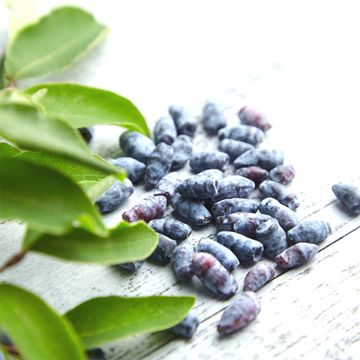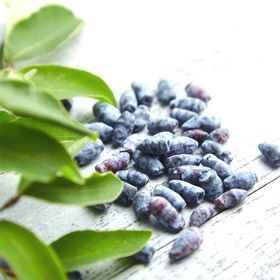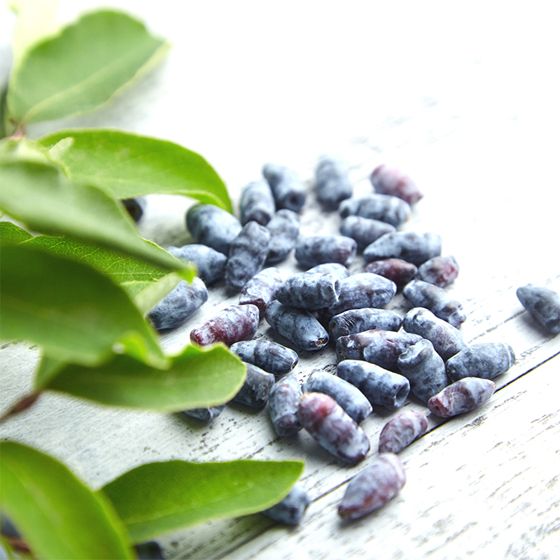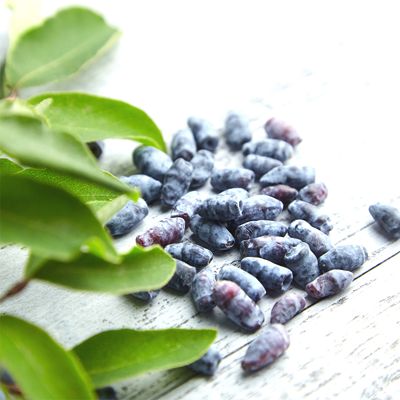Honey Bee Honeyberry Plant
Description
Grow a unique and nutritious fruit – Honeyberries!
The Honeybee Honeyberry is a favorite among enthusiasts, as it fruits at an early age and holds onto its fruit better than most other varieties. These elongated berries are sweet and tart, similar in flavor to blueberries. Its fruits are cylindrical and look more like their Russian parent perhaps like the shape of a bee’s body.
These fruits are high in antioxidants, as high or higher than blueberries! Honeyberries can be used for jams, juice, syrups, and wine. They also make great ice cream and smoothies.
Honeyberry plants are very vigorous and early producing, often setting fruit in their second year after planting. These upright growing plants bloom in April and set fruit that ripens mid-June to mid-July. Also referred to as Haskaps, this cold-hardy plant is a great choice for gardeners up north!
It requires about 1,000-1,200 chill hours. Plant honeyberries in rich soil, with a pH between 5-7. For this specimen to produce, it’ll need a different honeyberry plant that blooms around the same time to pollinate it.
Honeybee was selected to be a pollinator for Borealis, Tundra, and the Indigo series, but it pollinates well with other mid-season bloomers.
Characteristics
| Bloom Color | Cream, Yellow |
| Bloom Time | Mid |
| Fruit Color | Blue |
| Fruit Size | Large |
| Hardiness Zone Range | 2 - 8 |
| Pollination | Pollinator Required |
| Ripens/Harvest | June |
| Shade/Sun | Partial Shade - Full Sun |
| Soil Composition | Loamy |
| Soil Moisture | Well Drained |
| Soil pH Level | 5.0 - 7.0 |
| Taste | Sweet, Tart |
| Years to Bear | 2 - 3 |
Zone Compatibility
Pollination
This variety requires another one for adequate pollination.
Tools & Supplies
Planting & Care
Learn all about how to grow honeyberry plants in The Growing Guide. An entire section of our website dedicated to your growing success.
Questions & Answers
Customer Reviews
More items we think you'll love!
 On Sale
This variety is compatible with your location
On Sale
This variety is compatible with your location
 On Sale
This variety is compatible with your location
On Sale
This variety is compatible with your location
 On Sale
This variety is compatible with your location
On Sale
This variety is compatible with your location
 On Sale
This variety is compatible with your location
On Sale
This variety is compatible with your location
 On Sale
This variety is compatible with your location
On Sale
This variety is compatible with your location
 On Sale
This variety is compatible with your location
On Sale
This variety is compatible with your location




